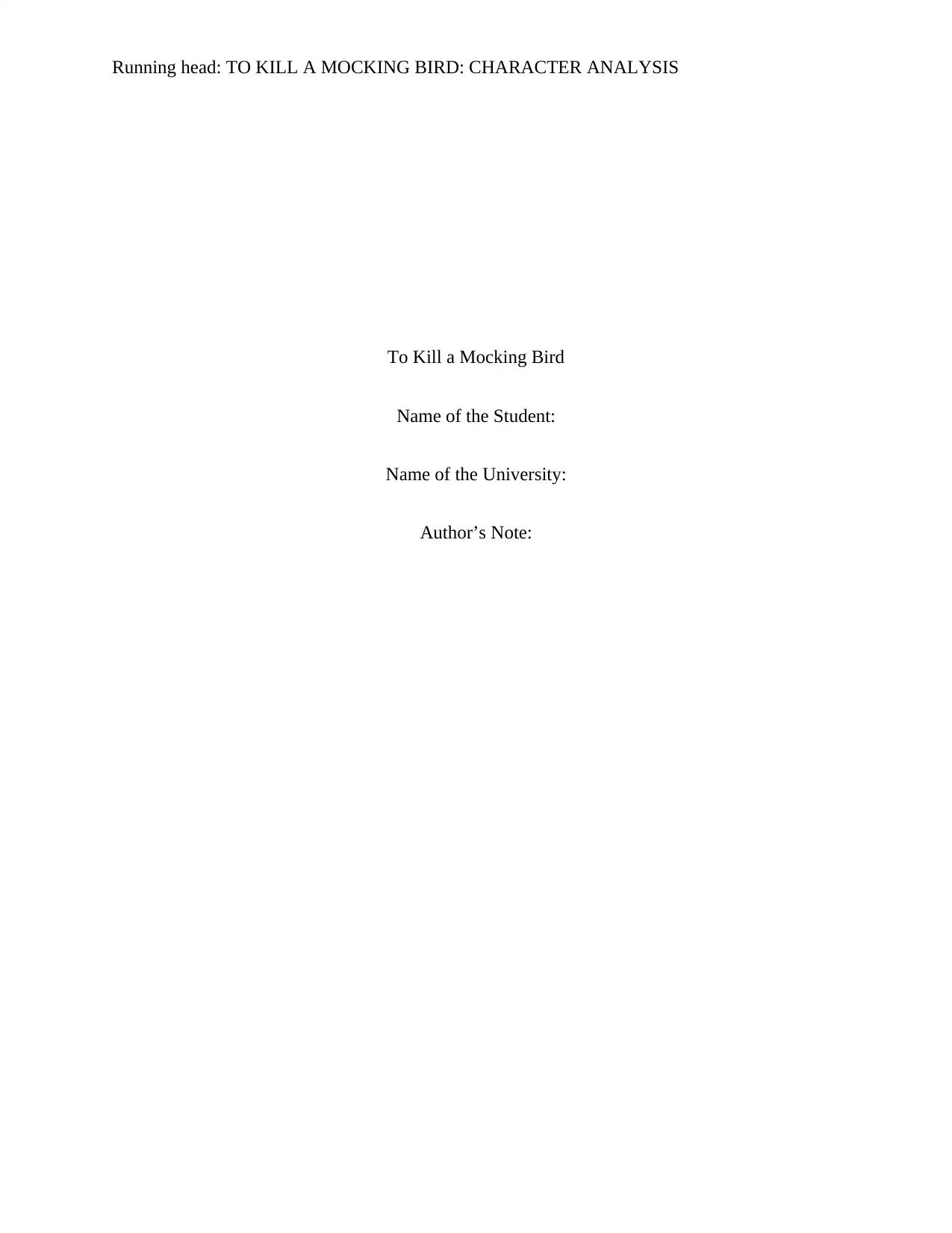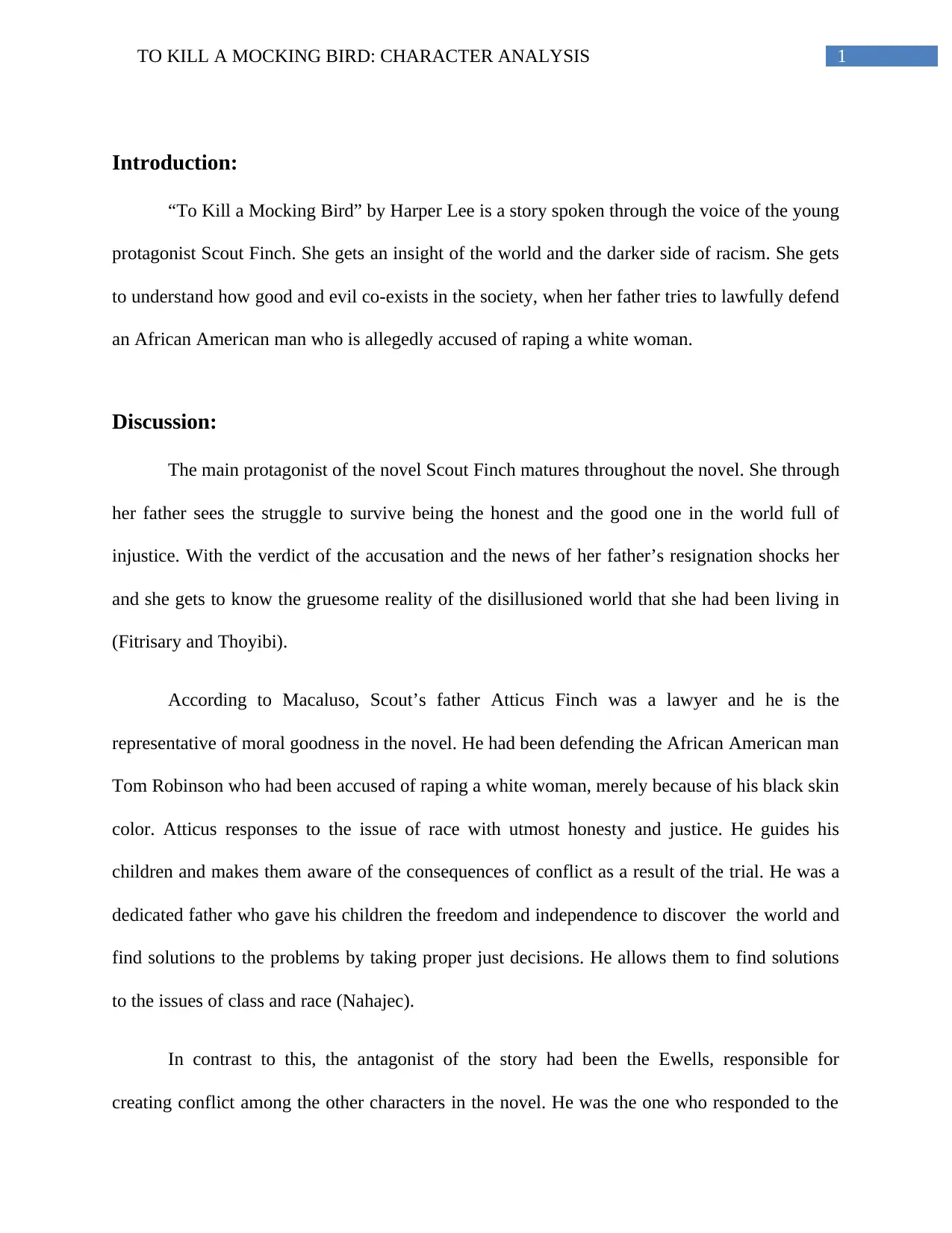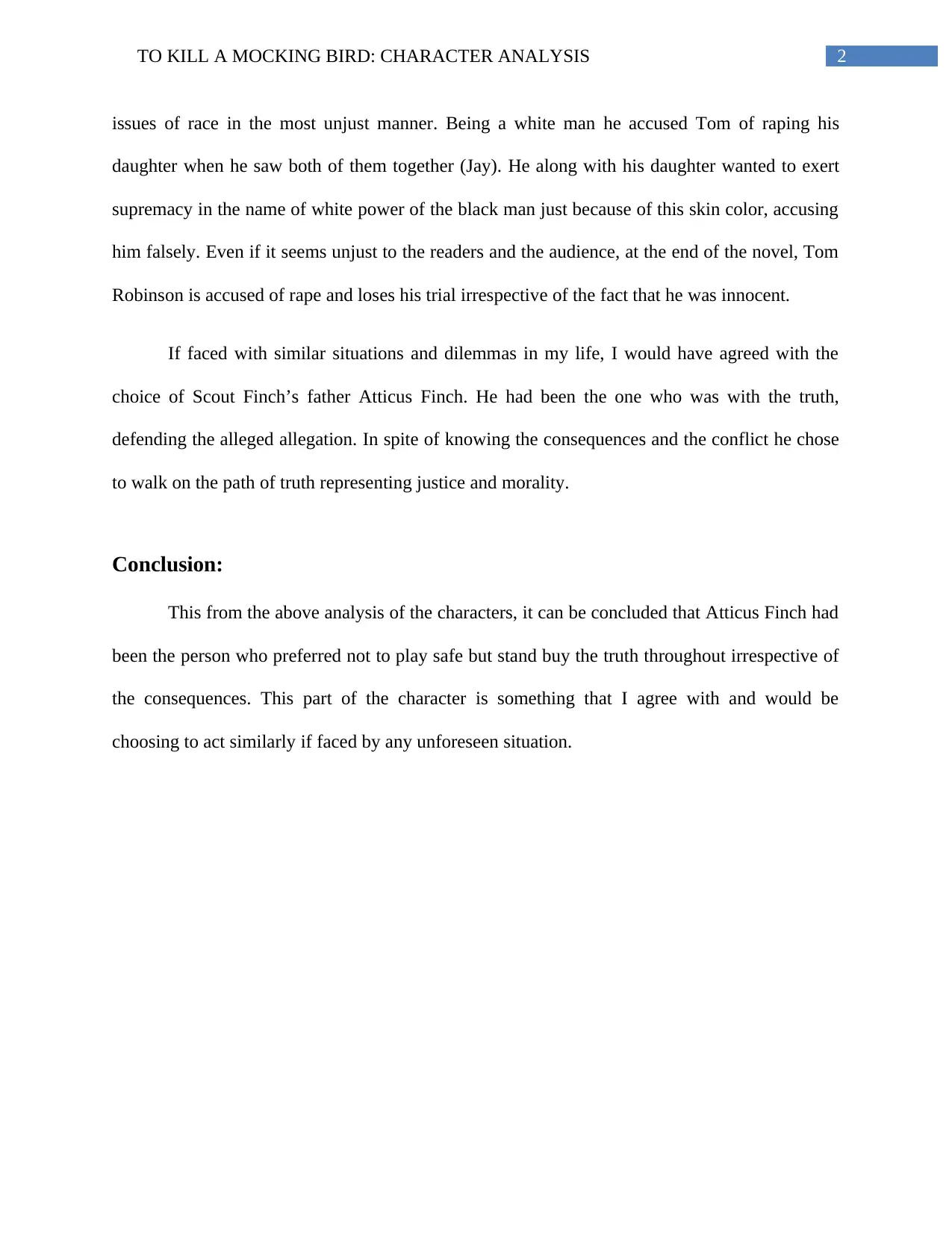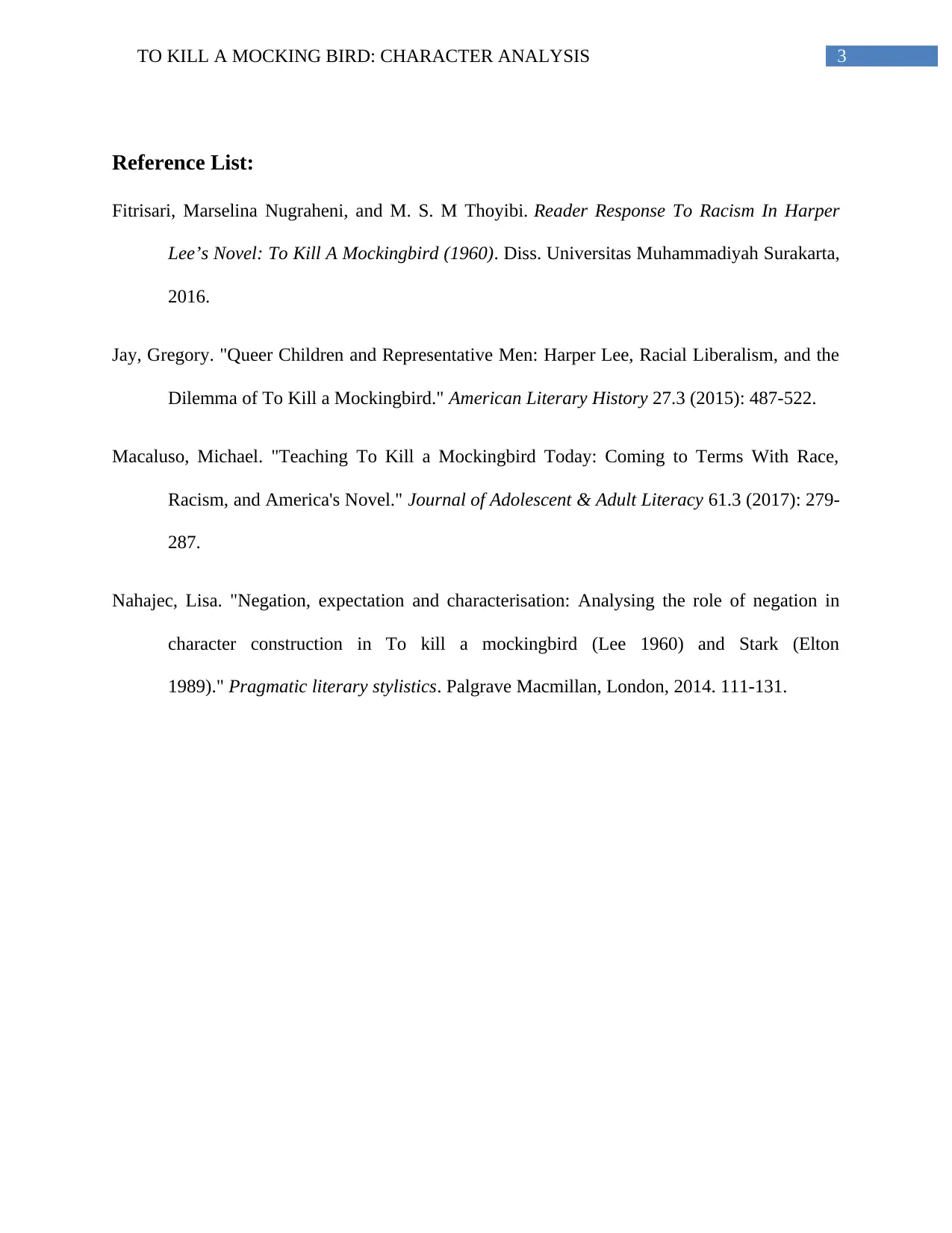Analysis of Characters and Themes in To Kill a Mockingbird
VerifiedAdded on 2022/08/18
|4
|755
|14
Essay
AI Summary
This essay delves into a character analysis of Harper Lee's "To Kill a Mockingbird," focusing on the protagonist Scout Finch and her father, Atticus Finch. The essay examines Scout's maturation as she navigates the complexities of the adult world, particularly the themes of racism and injustice. It highlights Atticus Finch as a symbol of moral goodness and justice, contrasting him with the antagonist, the Ewells, who represent prejudice and societal conflict. The analysis explores Atticus's unwavering commitment to truth and justice in defending Tom Robinson, despite facing significant opposition. The essay concludes by emphasizing the author's agreement with Atticus's moral stance and his dedication to truth, regardless of consequences. The essay also references supporting literature.
1 out of 4











![[object Object]](/_next/static/media/star-bottom.7253800d.svg)